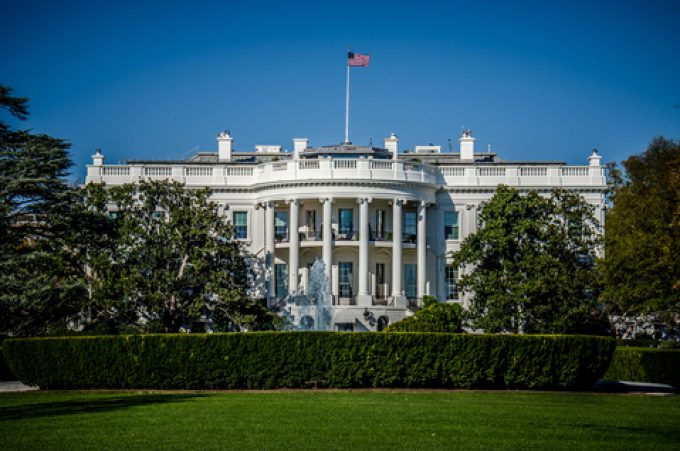Food supply chain players are getting a taste for diversification
Food shippers and retailers are increasingly attempting to diversify their sourcing locations to introduce greater ...

The Biden administration has elevated supply chain resilience to a fundamental strategic concern for the US, and last week announced a raft of measures which elevated it to the top tier of government and saw the creation of new bodies to anchor the effort.
Supply chain resilience and the securing of critical supplies is now top of the pile in the Oval Office in-tray, with the new White House Council on Supply Chain Resilience holding its inaugural meeting on 27 November. Its first quadrennial review is scheduled for completion by 31 December 2024.
Co-chaired by the national security and economic advisors, the council roped in nearly all members of the cabinet – including the secretaries of Commerce, Defense, Transportation, Labour and Treasury.
“Robust supply chains are fundamental to a strong economy,” the administration declared, emphasising that smooth supply chains should help reduce inflation.
The creation of the council is one of nearly 30 measures, from the establishment of a Multimodal Freight Office and Supply Chain Resilience Centre, to steps aimed at securing strategic supplies of critical medicines, similar to those the administration took to shore up supplies of semiconductors and clean energy.
Specific to critical medicines, a supply chain resilience and shortage co-ordinator will head the government’s assessment of ‘the dependence on foreign supplies of critical drugs’. At the same time, the White House announced a presidential determination to enable investment in the domestic manufacture of medicines deemed essential to national defence.
Some of these steps, and the magnitude of the overall package, may be viewed by some as government meddling, but Douglas Kent, EVP of corporate and strategic alliances at the Association for Supply Chain Management, welcomed the initiative.
“You need some structure around building strategic resilience,” he commented, adding that this was geared to investing in the future, as opposed to investing to recover.
The administration’s CHIPS and Science Act and its infrastructure package have been relatively well received, although most of the results are yet to manifest themselves, he noted. Washington’s creation of a Supply Chain Disruptions Task Force in 2021 was a largely welcome intervention to alleviate the disruption from widespread congestion at the time, he added.
Mr Kent said the establishment of a Multimodal Freight Office within the Department of Transportation was an important step. According to transport secretary Pete Buttigieg, this body “will lead co-ordination of our efforts to strengthen supply chains”.
Armed with a $2m budget in the 2023 fiscal year, and $7.3m for 2024, the Multimodal Freight Office will oversee the expansion of the government’s Freight Logistics Optimisation Works (FLOW) programme that was launched in March last year, to create smooth data flow between all stakeholders and end-to-end supply chain visibility through public-private collaboration.
“FLOW is going to be critical,” said Mr Kent. “We’ve had a lot of supply chain disruption and a lot of instability due to transportation issues.”
Started with 18 participants, FLOW has grown and includes five of the top US container ports, seven major ocean carriers and four of the top five retailers.
However, there has been a lack of enthusiasm to embrace it, largely due to concerns about data leakage to competitors, as well as some player reluctance to devalue proprietary data-sharing platforms.
Mr Kent identified trust, technology and data hygiene as the three critical areas that must be addressed to overcome reservations to join FLOW.
Another data-related drive is set to move through the Department of Commerce’s new Supply Chain Centre. In partnerships across government, industry and academia, this aims to integrate “industry expertise and data analytics to develop innovative supply chain risk assessment tools, and is coordinating deep-dive analyses on select critical supply chains to drive targeted actions to increase resilience”.
This is not a million miles from the brief for the Department of Homeland Security’s new Supply Chain Resilience Centre. In collaboration with the private sector, this body will provide annual reports on supply chain vulnerabilities and perform scenario planning.
Mr Kent sees promise in its capability to run simulations of potential risk events. Presumably these will focus initially on aspects that are critical to national security, such as energy, healthcare, food and access to critical materials.
But he added: “I would like to see a little bit more on sustainability. This gets light mention in there.”
Aside from some measures related to clean energy, there is scant reference to sustainability in the government’s announcement, other than plans to monitor global developments related to El Niño.
While the sum of the measures aims to secure the supply of critical materials to the US, it is not intended as a move to pull up the drawbridge and pursue autarky, as the White House makes clear, with reference to numerous joint initiatives with other countries.
“This isn’t always a go-it-alone strategy. There’s a lot of reference to partnerships and alliances,’ Mr Kent said.
Comment on this article
Hugh Cutler
December 11, 2023 at 2:59 pmI am from the government and here to help, maybe by 2025…..